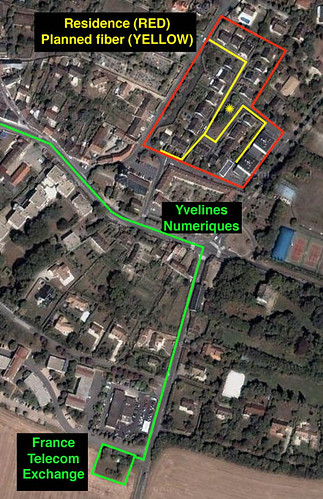Last night was the association meeting. It started at 8:30 PM and didn't end until about 12:30 AM. It was a very interesting introduction to how these associations work.
As with all good public meetings there had to be a bit of drama. We needed everyone in the residence represented in the room in order to vote on a particular issue that required unanimous agreement. The association leadership scrambled to get everyone there, including making last minute phone calls from the meeting, and finally succeeded. However, just then, someone got up, stormed out and went home without a word. We'll get to put that item BACK on the agenda for next year. :)
There was no decision on the roads either so we'll need another meeting on it probably in December. There are various rules about calling these meetings including the amount of notice you need to give people. I think they said they needed 3 months - but I'll check to make sure. The association made very good arguments for why the roads should be done now (e.g. more costly if we wait, possible significant tax hike). However, some of the residents wanted to have an architect come and give an expert opinion on what work was necessary before continuing. That means that I'll have some time to plan everything before the work actually has to be done. I see this as a good thing.
There were a few other things that struck me which will have an impact on the project. First, the residents who have lived there from the beginning (35 years) have a very different perspective on many of the issues than some of the younger couples now moving in. The longer-term residents seem less interested in fixing roads, replacing lamp posts etc. Second, I get the feeling that the EUR 2,000 required from each household to fix the roads will likely be much more difficult to pay for some households than others. There may be a income, as well as a generational division within the community.
From the discussions, I can tell it will be very difficult to get a large number of residents to pay up front to install the fiber. Probably the only way to get this off the ground is me putting it in and then renting lines back to the residents. I may have overestimated "willingness" and "ability to pay" from a good number of residents. That isn't to say that they won't pay for broadband or triple play over fiber. I believe most will. They just don't want the upfront risk for a network they don't really understand. Education may solve some of the problem but there are others who just simply won't connect. I'm still positive about the project though.
I did have time to speak to the people arranging the bids for the road work and told them that I'd like to have some trenching included in the overall bid - even if I have to pay the difference. Someone explained to me that putting in the trenches may be fairly easy and inexpensive once the road work had started. I'll have to look into that a bit more. There is also the question of whether we could use the existing ducts of Noos.
Even though we weren't able to come to a decision on the road I still feel there is sufficient support for the project to go forward.

